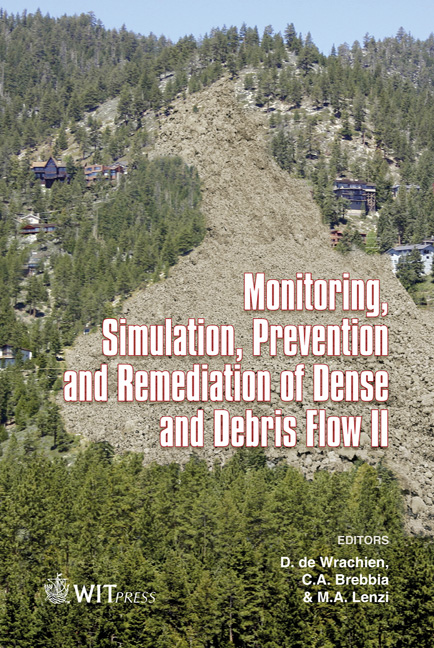Numerical Modelling Of Transient Flows With High Sediment Concentrations
Price
Free (open access)
Transaction
Volume
60
Pages
10
Page Range
71 - 80
Published
2008
Size
419 kb
Paper DOI
10.2495/DEB080081
Copyright
WIT Press
Author(s)
B. J. Dewals, S. Erpicum & M. Pirotton
Abstract
The main purpose of the present paper is to describe and discuss the development, validation and application of a numerical model designed to handle transient flows with high sediment transport rates. The model considers nonequilibrium transport (i.e. accounting for loading/unloading delay) and is numerically as well as physically totally coupled. The closure relations needed to evaluate the exchange fluxes between the fixed bottom and the flowing mixture (erosion and deposition rates) are also detailed in the paper. Finally, the model is validated against experimental data collected in the framework of the European project IMPACT. Keywords: sediment transport, depth-averaged flow modelling, finite volume, erosion rate, dam break on an erodible topography. 1 Introduction Conventional models for flow and sediment transport usually consider a weak numerical and physical coupling between the sub-models for hydrodynamics and for sediment transport. However, in numerous cases of intense transport conditions, such as debris flows but also flows caused by dam breaks occurring in erodible valleys, the above-mentioned loose coupling is not valid. In particular, many historical dam break events in the world are known to have induced highly erosive flows, which in turn caused significant scouring in the downstream valley, both in the floodplains and on other structures (e.g. dam breaching in cascade). For the purpose of modelling such flows, characterized by extremely high sediment loads, the sub-models for hydrodynamics and sediment transport need
Keywords
sediment transport, depth-averaged flow modelling, finite volume, erosion rate, dam break on an erodible topography.





